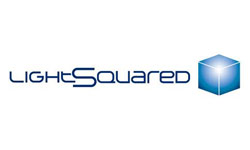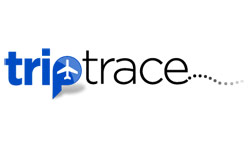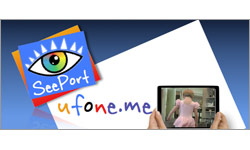Top 10 Mobile Startups of 2011

Even in these challenging economic times, technology entrepreneurs continue to dream big. Maybe it’s the allure of hitting the jackpot like Facebook’s Mark Zuckerberg or the thrill of dreaming up a hot new mobile hit à la Groupon. Whatever their reasons, business hopefuls continue to boldly found technology companies and aggressively ply their wares to consumers and venture capitalists alike. In fact, according to Dow Jones VentureSource, venture capital firms invested $25.1 billion in 2010 (year ending in September). That’s up 10 percent from the same period in 2009. While that’s a modest gain compared to previous boom years, its a sign that the Great Recession could be thawing.
Given that there are dozens of mobile tech companies hoping to get noticed in 2011, we wanted to recognize those that have the most potential. From space-based 4G cellular networks to shoes that track your location, these are the startups we’re most excited about.
LightSquared: 4G From Space

There’s been a lot of talk recently about fast 4G cellular networks, first with Sprint launching its WiMax-based mobile broadband service, then with T-Mobile’s HSPA+ network. Verizon Wireless really threw down the gauntlet when it flipped the switch to 4G LTE service in December, offering speeds in excess of 15 Mbps. All of this competition is great news for mobile device users, whether they’re corporate travelers with laptop data cards or casual smart phone or tablet surfers.
The Achilles heel of 4G cellular networks is access. Thus far, carriers have only deployed the infrastructure in select major cities. But imagine grabbing a blisteringly fast 4G LTE signal almost anywhere in the US. That’s just what Virginia-based LightSquared hopes to make possible.
Using terrestrial cellular stations supplemented with a network of space-based communication satellites, LightSquared plans to build a 4G LTE wireless broadband system the likes of which the planet has never seen.

Why the Competition Should Care
Stay in the know with Laptop Mag
Get our in-depth reviews, helpful tips, great deals, and the biggest news stories delivered to your inbox.
Cellular carriers rely on a network of land-based towers and repeaters to distribute their signals throughout the country. Deploying all that physical hardware is time-consuming and expensive, which in turn hinders 4G footprint growth. By launching a GPS-style orbital setup, LightSquared theoretically solves these headaches and can conceivably roll out its system more efficiently. If all goes according LightSquared’s design, the company will be able to sell 4G LTE network access back to the highest bidder, be that U.S. Cellular, T-Mobile, or another player. In fact, LightSquared has said its objective is to operate as a wholesale provider only, and not to sell its network access directly to consumers.
Outlook
Using satellites for high-speed mobile data sounds like a great plan on paper, but it’s risky—and lobbing anything into orbit certainly isn’t cheap. The million-dollar question is whether LightSquared can build its space-age infrastructure without too many technical glitches or setbacks. For example, the National Telecommunications and Information Administration (NTIA) recently placed LightSquared under increased scrutiny over fears that its terrestrial base stations will cause interference with GPS and emergency communications. However, a green light has now been given by the FCC and the company anticipates a commercial launch by the second half of 2011.
TripTrace: Travel Meets Social

Does the web need another travel service? TripTrace makes a compelling argument. Founded in 2007 by entrepreneur and computerized map expert David Hose (chairman) and Michael Rubin (CEO), who cut his teeth helping design the Netflix website UI, TripTrace aims to create an engaging, interactive, and completely holistic travel experience.
Most travel sites focus primarily on mundane details such as researching and booking hotels and flights. TripTrace can help with these tasks too, but Hose and Rubin believe a smarter solution is to construct a travel service around an individual’s tastes and preferences. They believe it must also be totally web-based, have strong integration with geographic location, and pull in info from social networking sites as well as the entire Internet.
The result, though still in beta, is a service that’s built around a virtual bookshelf that stores digital tomes to help users research various travel topics. These activities range from planning trips to calculating expected budgets. Users can also manage scrapbooks that present and store maps and places, creating a complete record of where they’ve been and where they’d like to go. The ultimate shape of TripTrace is yet to fully form, but it holds promise. The interface is especially suited for tablets, which complement the site’s book motif.

Why the Competition Should Care
TripTrace’s assertion that other popular travel services usually just handle the core functions of trip planning is true. Expedia, Orbitz, Travelocity, and even newcomer TripIt are more targeted at business travelers who simply need to know where, when, and how to get to their destinations. TripTrace is something else all together, offering a way to plan, store, and share travel information in a scrapbook or album format. TripTrace launched a Google OS web app along with an iPhone app in December of 2010. There are no confirmed plans for an iPad app yet, but CEO Michael Rubin admitted that he thinks TripTrace would be great on the device.
Outlook
Last year, TripTrace got into a spat with Facebook over its original name, Placebook. Threatened with legal action, TripTrace dropped the Placebook moniker. Although the company avoided legal trouble by adopting a new brand, TripTrace lost valuable time needed to get its service up and running. The website was officially redesigned and launched in August 2010.
We believe that the best chance for TripTrace to really catch on—besides developing a tablet app—is for the company to pull in data not just from social networking sites but also from other travel services. The real beauty of this startup is that it will let travelers store and share all their trips with others in a way that’s engaging and elegant.
Badgeville: The Foursquare of the Web

One of Foursquare’s most compelling aspects is its game dynamic, which rewards users with virtual badges for checking into venues repeatedly. The benefit for businesses is that potential customers voluntarily give up valuable marketing data just by using this app, and others like it. In many cases, app users will promote a venue or game to their friends through Facebook and Twitter. That kind of free advertising is invaluable. Might businesses pay great sums to integrate this functionality into their websites? That’s exactly what Badgeville is hoping for.
Launched in September 2010, Badgeville has created what the company calls a Loyalty and Rewards Platform for web publishers. Badgeville will help websites use social media and incentives to keep visitors engaged and pull in additional business. Badgeville is also building configurable widgets and apps to help businesses accomplish these goals. The apps will use proven tools such as points, awards, and, of course, badges. The Badgeville platform will also integrate into a web publisher’s existing online community to both track and share analytics along with changes in user status.

Why the Competition Should Care
If Badgeville can successfully implement and sell its service, its potential growth could significantly increase the size of various online communities. This startup could also conceivably challenge Goliaths such as Facebook. The shock waves of Badgeville ramping up could hit the mobile space quickly.
Outlook
According to Badgeville, it has raised $2.8 million in funding and had landed $1 million in contract bookings by the end of 2010. Badgeville has also secured more than 25 clients across media, content, and healthcare verticles. Examples include Comcast Sports Group, Philly.com, and TechCrunch. Badgeville said it’s on target to have several hundred customers by the end of 2011. That’s impressive considering that the company was officially formed late last year.
Qwiki: Research Reinvented

Qwiki makes Wikipedia look like a relic. This flashy online encyclopedia leverages the power of videos, photos, graphics, and audio to provide a captivating way to research any topic. As founder Doug Imbruce puts it, “information becomes an experience I can watch.” The idea is to create interactive experiences built around search terms by using machine algorithms, called Qwikis. Qwiki information is presented through voice narration along with corresponding images, video, and text, all in a smooth and interactive interface.
Imbruce, who previously created and sold a network of higher education sites, founded Qwiki in 2009, and Louis Monier came on board soon after. Monier is best known for being the founder of search engine AltaVista back in the ‘90s.

Why the Competition Should Care
Qwiki sees its information visualizations as perfectly suited to the content browsing style of the iPad. According to Qwiki, its product won’t compete directly with Wikipedia. Even so, it will pull data from Wikipedia and other web-info resources to provide a clean and engaging experience. This could disrupt more traditional data archive and search sites such as Google and Wikipedia.
Outlook
Qwiki is currently in public alpha testing on the web with an iPad app scheduled for release by March. At press time, Qwiki said that it’s also interested in pursuing an iPhone app. Even so, Doug Imbruce has said that Qwiki is theoretically agnostic when it comes to device platforms and it will operate on virtually any piece of mobile hardware with enough horsepower. Qwiki plans to open its technology to interested third-party businesses by Q3 of 2011.
Innovalley: Smart Clothing is Here

With offices in Barcelona, Palo Alto, and San Francisco, this startup is certainly the most fashionable on our list. Founded in 2010, Innovalley has plans to create three separate lines of products based on the concept of smart clothing, or apparel with embedded electronic devices. For example, a YouShine brand will consist of bags equipped with solar panels that let you charge electronic devices on the go.
The GPS shoes line will feature GPS receivers to track a wearer’s location and will use vibration sensors to measure additional data. Lastly, a BCN2 line of clothing will sync with mobile phones to showcase tweets and texts in real time on the wearer’s body.
Innovalley was recently ranked number 24 on GuideWire Group’s Innovate100 list, which identifies the top 100 innovative new companies worldwide.

Why the Competition Should Care
There is currently no direct competitor to Innovalley and its smart clothing, save perhaps Voltaic solar bags—but Innovalley’s designs are decidedly more fashion-forward. This mobile startup company has said that it intends to license its technologies to other clothing companies. Nike could be a potential competitor; its Nike + iPod Sport line of sneakers uses a Bluetooth transmitter to connect to iPods and iPhones.
Outlook
Though Innovalley has already raised $300,000 from corporate sponsors, the company is in the midst of seeking an additional $1 million from angel private investors. It’s certainly conceivable that Addidas, Reebok, or even Nike could snatch this startup.
Dynamics, Inc.: One Card for Every Account

When you think of areas needing innovation within the mobile space, the ubiquitous credit card doesn’t immediately come to mind. Still, it’s a piece of technology most of us carry almost every day. Payment by plastic, whether that be debit or credit, hasn’t really changed much in the last two decades. Enter Pittsburgh-based Dynamics. Founded in 2007, the company promises to update what credit cards can do for the better. Dubbed Card 2.0, Dynamic’s product could change the way we pay.
As part of the Card 2.0 platform, each “smart” card has various new tricks up its sleeve. For instance, to cut down on clutter in your wallet, one card can hold multiple accounts. Activating buttons on the card will select a given account, with an LED indicating which service is initiated. Magnetic strips have the ability to be rewritten on the fly as well.
Dynamics also envisions cards that have partially hidden account numbers, requiring users to enter their PIN directly onto the card for added security. To lock down financial data even further, Card 2.0 products have the ability to rewrite a new and unique dynamic security code directly to the magnetic strip after each purchase. This means that even if your card is stolen or your account is hacked, the information will be useless.

Why the Competition Should Care
Dynamics seeks to address a growing need: increased capability and security at point-of-sale. In fact, its technology should fit like a well-placed Tetris block into the existing payment infrastructure of magnetic card scanners and wallets. Card 2.0 products will also play well with the many companies that have entered the emerging mobile payments market, such as Square.
Outlook
Citibank is onboard to implement Dynamics’ technology as part of a pilot program, and users can expect to get their hands on these high-tech cards by the year's end. Not content with just revamping the credit card, Dynamics also plans on supporting emerging applications, such as integrated chips in smart phones. However, there is a lot of competition in the mobile payment space, including Intuit, MobilePay USA, and Square. This startup will need to take advantage of shoppers’ comfort level with plastic and get a product out the door soon so that it will be fresh in consumers’ minds when the phone-as-wallet trend really takes off.
SeePort: Always-On Video Chat

Ever since FaceTime on the iPhone 4 pushed video calling into the mainstream in June last year, manufacturers have been scrambling to add the feature to their own products. Startup company SeePort is one of many companies with plans to tap into this consumer desire for face-to-face remote communication.
Founded in 2010, the San Francisco company has partnered with video conferencing service provider Vidtel to bring to market both a mobile software platform and a dedicated video chat hardware device. SeePort envisions creating a solution, called ufone, that will always be on and easy to use.
The ufone will sport a touchscreen and will eventually support 4G cellular networks (a Wi-Fi-only version will be released first). SeePort will not market or sell the hardware device, but instead assist its manufacturer in doing so. Its solution will also be open source and provide remote access to mobile phone users. The company made news for winning a Founders Showcase award in August, 2010.

Why the Competition Should Care
SeePort CEO Lauren Elliot has said that the hardware device will be made with the help of a partner manufacturer that “rhymes with Kodak.” This feeds speculation that the mystery SeePort device could be some sort of digital picture frame with face chat capabilities. Elliot also claims that SeePort has plans to launch ufone apps on both iOS and Android by the end of Q1 this year. If ufone proves to be a reliable solution, it could give video chat pioneers such as OoVoo, Qik, Skype, and Apple’s FaceTime a little heat.
Outlook
With so many players in the video chat space, and with Skype’s recent acquisition of Qik, it will be difficult for SeePort to stand out in the crowd. But the unique always-on nature of ufone gives it a solid chance at making a dent in what’s still a very young market.
Particle Code: Write Once, Run Everywhere

Software designers and programmers have long bemoaned the issue of fragmentation across smart phone operating systems. As mobile devices running different software increasingly flood the market, the incentive to create über apps that operate on multiple platforms grows. Writing apps for different OSes takes extra time and money, and developers often ignore certain platforms altogether. What if programmers could simply write app code in one language and automatically port it over to another—or even more than one? That’s the goal of startup Particle Code’s new product.
The company has a software development kit called Particle Platform, and it’s touted as the solution for both OS and hardware fragmentation. Particle Platform lets developers design apps for multiple devices using languages they are familiar with, including Java, ActionScript3, and C#. Supported operating systems include Android, BlackBerry, iOS, J2ME, Symbian, and Windows Phone.

Why the Competition Should Care
In this app-crazed age, the benefits of building a mobile application just once and then porting it swiftly to multiple smart phone OSes is hugely compelling. It could level the playing field, helping small shops and even individual developers get in on the app game. Particle Code’s direct competition is telecom giant Alcatel-Lucent, which acquired a similar platform called OpenPlug.
Outlook
Currently in beta, Particle Code has plans to open its platform to more users in the coming months, and eventually to the public sometime this year. Particle says its solution is more streamlined than OpenPlug, which it described as “less click-to-compile.” Since Particle Code does its translation at the source code level, few tweaks in the target app are required.
Word Lens: Instant Translations

The term “augmented reality” has been bandied about since the Tom Cruise movie Minority Report was released in 2002. This sci-fi technology, which blends what a user actually sees with computer-graphical imagery and helpful information, took a step forward last year with Google’s Goggles and Sky apps for Android. Now, Quest Visual is pushing the AR limits with Word Lens, an iPhone app that translates foreign languages into English in real time.
This particular application (the app itself is free, but language packs cost $9.99 each) could help users to quickly translate signs on trips to Barcelona or even at the local taqueria. You use Word Lens by simply opening the app and pointing your phone’s camera lens at the text you’d like to translate. The software will substitute foreign words with their corresponding English phrases.

Why the Competition Should Care
The mobile translation space is definitely heating up. There are a number of voice interpreter apps on the market, including iSpeak and Jibbigo, as well as dedicated devices (although those products are much more expensive than Word Lens).
Outlook
Word Lens generated a lot of buzz when the app launched in December 2010. When asked about the direction and future plans for Word Lens, founder Otavio Good said that building an Android app is top priority. Good also said that he envisions Word Lens foremost as a travel tool for tourists—not as a full-blown translation software suite. Essentially, he’d like to do his bit to reduce the language barrier worldwide. In addition to the usual software tweaks to shake out bugs, support for other European languages is on the docket.
SnapStick: From Phone to TV

Getting Internet video to play nice with the living room TV is a top priority these days, and many players are trying to get in on the action. From juggernauts like Google to scrappy newcomers like Boxee, companies are striving to break down the wall between web content and our shiny plasma or LCD. Enter SnapStick, which offers a whole new approach that could be the simplest video-to-TV platform yet.
SnapStick provides software that runs via a mobile app (currently available for iOS). Once Internet video content is found via the app’s built-in browser, users make a flicking gesture with their phone toward the television. The app tells a set-top box connected to your TV what video to load. Like magic, the content loads instantly on your big screen.
It doesn’t matter that the iPhone doesn’t support Flash. The box itself knows whether it’s an episode of 30 Rock on Hulu or Glee on Fox.com, so it only seems like video is streaming from your mobile device. To make the video play at full screen, you just press whatever shortcut is on your phone’s display.
Currently in beta testing, the version of SnapStick we saw used a custom-made set-top box powered by an Intel Atom CPU and Nvidia Ion graphics. However, SnapStick doesn't want to get into the hardware business.

Why the Competition Should Care
SnapStick has announced plans to partner with network hardware company D-Link. D-Link, which is expected to implement SnapStick software into its products by Q2, also makes the Boxee Box. If SnapStick ever finds a home on Boxee devices, this combo could prove to be an impressive one-two punch.
Outlook
Founded in 2010, SnapStick has generated a considerable amount of excitement given its short history. But this start-up will have to land more partners than D-Link if it's going to gain widespread appeal. The more media boxes—and perhaps smart TVs—that support SnapStick, the greater its chance of adoption among users.
The Foursquare of the Web
Badgeville
badgeville.com
One of Foursquare’s most compelling aspects is its game dynamic, which rewards users with virtual badges for checking into venues repeatedly. The benefit for businesses is that potential customers voluntarily give up valuable marketing data just by using this app, and others like it. In many cases, app users will promote a venue or game to their friends through Facebook and Twitter. That kind of free advertising is invaluable. Might businesses pay great sums to integrate this functionality into their websites? That’s exactly what Badgeville is hoping for.
Launched in September 2010, Badgeville has created what the company calls a Loyalty and Rewards Platform for web publishers. Badgeville will help websites use social media and incentives to keep visitors engaged and pull in additional business. Badgeville is also building configurable widgets and apps to help businesses accomplish these goals. The apps will use proven tools such as points, awards, and, of course, badges. The Badgeville platform will also integrate into a web publisher’s existing online community to both track and share analytics along with changes in user status.
Why the Competition
Should Care
If Badgeville can successfully implement and sell its service, its potential growth could significantly increase the size of various online communities. This startup could also conceivably challenge Goliaths such as Facebook. The shock waves of Badgeville ramping up could hit the mobile space quickly.
Outlook
According to Badgeville, it has raised $2.8 million in funding and had landed $1 million in contract bookings by the end of 2010. Badgeville has also secured more than 25 clients across media, content, and healthcare verticles. Examples include Comcast Sports Group, Philly
.com, and TechCrunch. Badgeville said it’s on target to have several hundred customers by the end of 2011. That’s impressive considering that the company was officially formed late last year.
